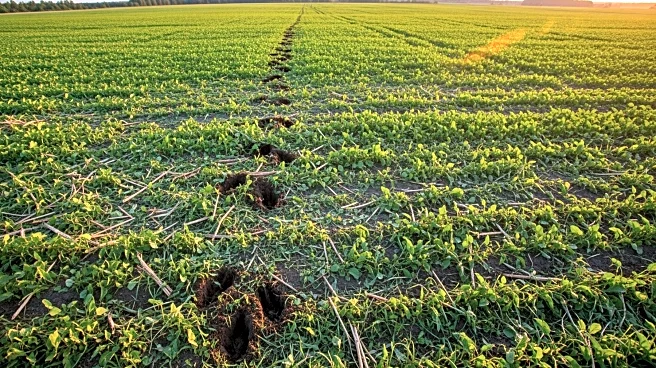What's Happening?
The Ministry of Agriculture and Livestock Development in Nepal has reported significant losses amounting to Rs 3.55 billion in the agriculture and livestock sectors following heavy rainfall in October.
The damage affected crops, livestock, seeds, and infrastructure across several provinces. The Ministry, in coordination with provincial agricultural offices and local authorities, compiled data to assess the impact. Information Officer Mahananda Joshi stated that the Ministry will work with the National Disaster Authority to provide relief, insurance support, and technical assistance to affected farmers. A task force has been established to further evaluate the extent of the losses. Large quantities of harvested paddy were soaked and spoiled due to waterlogging, which is expected to reduce overall crop yields. Despite budget constraints, efforts are being made to mobilize support in the form of fertilizers, seeds, and technical expertise to assist farmers.
Why It's Important?
The reported losses highlight the vulnerability of the agriculture and livestock sectors to natural disasters, which can have severe economic impacts. The reduction in crop yields due to waterlogging could lead to food shortages and increased prices, affecting both local and national economies. The mobilization of support and technical assistance is crucial to help farmers recover and mitigate future risks. This situation underscores the need for effective disaster management strategies and insurance mechanisms to protect the agricultural sector from similar events in the future. The collaboration between the Ministry and the National Disaster Authority is a positive step towards building resilience against natural calamities.
What's Next?
The Ministry plans to conduct further studies to develop measures aimed at minimizing future agricultural risks. The task force established will continue to assess the extent of the losses and work on strategies to prevent similar occurrences. The collaboration with the National Disaster Authority is expected to result in comprehensive relief efforts and the development of insurance support systems for affected farmers. These initiatives will be crucial in ensuring the sustainability and resilience of the agriculture and livestock sectors in Nepal.
Beyond the Headlines
The heavy rainfall and subsequent losses in the agriculture sector may prompt a reevaluation of current agricultural practices and infrastructure in Nepal. There is potential for increased investment in sustainable farming techniques and improved water management systems to prevent future waterlogging and crop damage. Additionally, the situation may lead to discussions on climate change adaptation strategies, as extreme weather events become more frequent and unpredictable.











